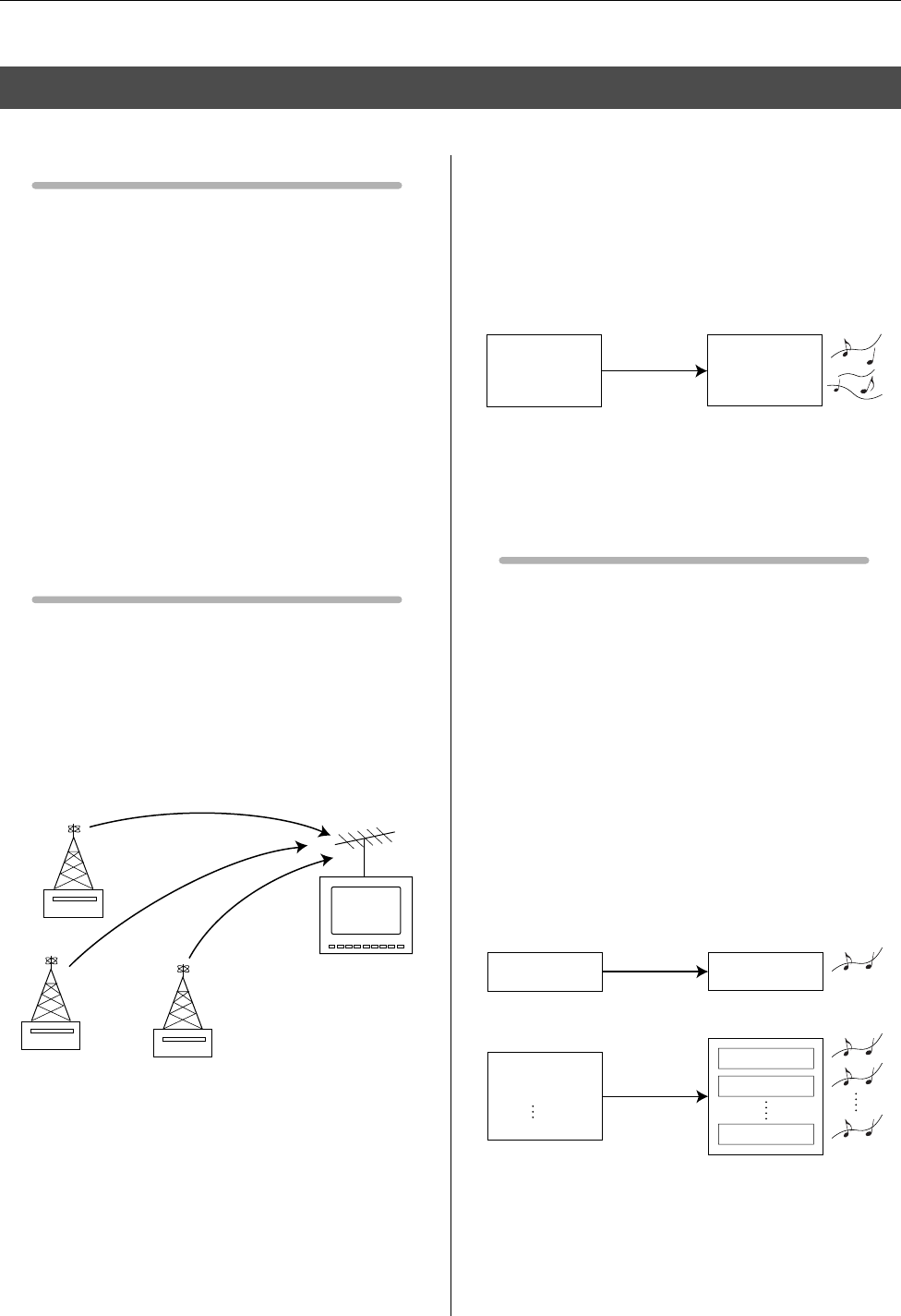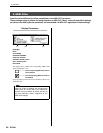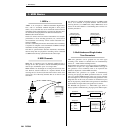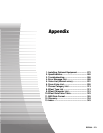
1. MIDI Basics
264 RS7000
1. MIDI is ...
“MIDI” is an acronym for “Musical Instrument Digital Inter-
face”, and is a worldwide standard designed to allow perfor-
mance, voice, and other data to be transferred between musical
instruments. Data communication is assured even between musi-
cal instruments and equipment from different manufacturers.
MIDI has three main functions:
The first is remote control of musical instruments. For example,
performance or voices switching operations, etc., carried out on
one instruments can remotely control another instrument con-
nected via MIDI.
Second is automated performance. Performance data recorded by
a sequencer or computer can be transmitted via MIDI to multiple
instruments for fully automatic playback.
The third is synchronization between instruments. Instruments
that use tempo data for playback or recording can be connected
via MIDI and accurately synchronized to the same tempo.
2. MIDI Channels
MIDI data is transferred over 16 channels numbered from 1
through 16. It is thus possible to transfer the MIDI performance
data for up to 16 different “parts” via a single cable.
MIDI channels can be thought of as being like television chan-
nels. Each TV station broadcasts on a separate channel. At the
receiving end (i.e. the TV set) the television receiver can be set to
receive only one of the many channels that are on the air at the
same time.
In a similar way, multiple transmitting devices in a MIDI system
can be set to transmit on separate channels which reach the
receiving device(s) via a MIDI cable. Only a MIDI device set to
receive on the same channel as a transmitting device will be con-
trolled by that device.
3. Multi-timbre and Single-timbre
Tone Generators
MIDI tone generators can be grouped into two main types
according to the number of channels that can simultaneously
receive on — Multi-timbre and Single-timbre.
Single-timbre tone generators can receive and play the MIDI per-
formance for one part via a single MIDI channel. This type of
tone generator is most commonly used as an expansion tone
module for keyboards or other MIDI controllers.
Multi-timbre tone generators are capable of simultaneously
receiving and playing the MIDI performance data for several
parts over multiple MIDI channels. This type of tone generator
can be thought of as several single-timbre tone generators in one
integrated unit. In this sense, the number of simultaneous parts
that can be played by a multi-timbre tone generator is determined
by the number of single-timbre tone generators it contains.
The RS7000 tone generator is a multi-timbre type which is
always capable of simultaneously playing up to 16 different parts.
1. MIDI Basics
Broadcast
Channel 1
Broadcast Channel 2
Broadcast Channel 3
The receiver
selects channel
1, 2, or 3
MIDI Instrument
(transmitting device)
(Performance data)
ch.1 ..Piano
ch.2 ..Guitar
ch.3 ..Bass
MIDI Instrument
(receiving device)
(Performance data)
ch.1..Piano
ch.2..Guitar
ch.3..Bass
MIDI transmit
channel settings
MIDI receive
channel settings
Synthesizer
(Performance data)
ch.1..piano
Single-timbre Tone Generator
Channel 1
Sequencer
(Performance data)
ch.1....Piano
ch.2....Guitar
ch.16..Drums
Multi
-timbre
Tone Generator
Channel 1
Channel 2
Channel 16


















